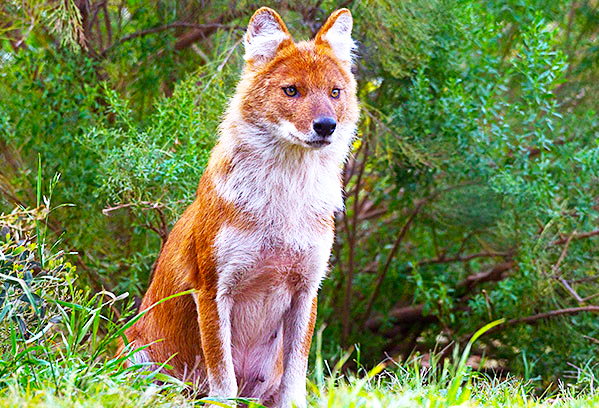Font size:
Print
Species in News: Dhole
Dhole spotted again in Assam’s Kaziranga
Context: In a major conservation breakthrough, dholes (Asiatic wild dogs), once thought locally extinct in parts of Assam, have been rediscovered in the Kaziranga-Karbi Anglong Landscape.

About Dhole
-
- Scientific Name: Cuon alpinus
- Also known as: Asiatic wild dog, Indian wild dog, whistling dog, mountain wolf, red dog, red wolf (not to be confused with Canis rufus).
- Conservation Status:
- Endangered by the IUCN.
- The Wildlife Protection Act 1972: Schedule II
- CITES: Appendix II
-
Physical Appearance: It is is often described as a mix between a grey wolf and a red fox, with subtle cat-like features:
-
- Size: Body length ~90 cm (3 ft), shoulder height 43–56 cm (17–22 in), weight up to 18 kg (40 lbs), with females being smaller
- Fur: Rusty red to brown with a lighter underside; tail is bushy with a dark brown tip
- Ears: Rounded rather than pointed
- Teats: 6–8 pairs (more than most canids), supporting large litters
- Summer coat: Shorter, darker, and coarser
-
Distribution: The dhole’s native range spans Central and Eastern Asia, beginning from the Altai Mountains in Manchuria, extending southwards through India, Burma, and into the Malayan Archipelago.
- In India alone, three distinct subspecies (or races) of dholes have been identified: Trans-Himalayan Dhole, Himalayan Dhole, Peninsular Dhole.
-
Habitats: Prefer mixed forest and open spaces, where they are frequently spotted on jungle roads, riverbeds, forest clearings, and trails.
- Diet: Omnivorous, feeding on: Berries, insects, lizards (occasionally), Rodents, hares, wild pigs, deer, goats, and monkeys.
- Dholes typically breed once a year, with a gestation period of 60–63 days.
- Dholes are extremely social animals, living in large clans that are flexible in composition and lack strict dominance hierarchies. Clans typically number around 12 individuals, but groups of 40 or more have been observed.


